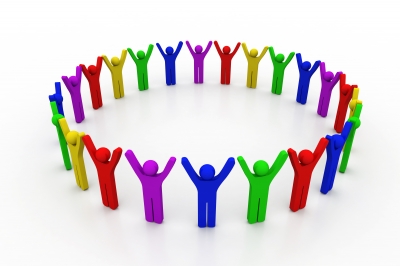 Having traveled extensively, I have been blessed to meet people from all over the world and learn about different cultures. And, I must say, I am a better person for it. So much strife in this world is caused by ignorance about others, which breeds fear and other negative feelings towards people who are different from us. Educating ourselves about other cultures helps us gain greater understanding of the different ways of life and ways of being; it helps us develop tolerance, even if we do not necessarily agree. It allows us to forge more successful interactions, whether personally or professionally. The sooner we start learning about other people, the better, and here are some tips for parents interested in strategies for teaching their children about diversity.
Having traveled extensively, I have been blessed to meet people from all over the world and learn about different cultures. And, I must say, I am a better person for it. So much strife in this world is caused by ignorance about others, which breeds fear and other negative feelings towards people who are different from us. Educating ourselves about other cultures helps us gain greater understanding of the different ways of life and ways of being; it helps us develop tolerance, even if we do not necessarily agree. It allows us to forge more successful interactions, whether personally or professionally. The sooner we start learning about other people, the better, and here are some tips for parents interested in strategies for teaching their children about diversity.
Get a Map or Globe for the Home
Get a map for your home that you can use to teach your children about other parts of the world. Set aside time to look at it and discuss the different parts of the world. When you hear news about another country—provided it is an appropriate topic to discuss with children of course—have them show the area of the world. Use this as an opportunity to start a discussion. Encourage your children to ask questions. Look up some interesting facts to share.
Encourage Your Child to Ask Questions
One of the greatest things about children is they often do not have a filter—they tend to speak what is on their mind. If they have a question, they ask it. Use this to your advantage to teach your children about different people. If a certain topic comes up regarding a different culture or race, ask directly if your child has any questions. Anytime your child asks a question about other people, whether it be about a cultural practice or physical appearance, discuss it freely. This curiosity about others should be encouraged, and being open to talking will keep the questions coming.
Attend Cultural Events in the Area
In most areas of the country, you will find a diverse group of people, and cultural events, such as festivals are commonplace. A quick internet search can provide a list of cultural events throughout the United States. This is one of the best ways to expose your child to an authentic international experience without having to leave the country. It is a great opportunity to jumpstart discussion, sample cuisine and get a taste of other traditions. If you live in New York near Stonybrook University for example, you can visit the center started by Charles Wang, which aims to educate people about Asian and Asian American culture; you can read about the differences he is making in teaching people about these cultures.
Have Your Child Correspond with an International Pen Pal
Imagine how much your child can learn about another culture by corresponding with another child across the globe. In this day and age, it might be an email exchange, but a good old fashioned letter is much more fun. There are several sites on the web that can help match up your child with an international pen pal, such as Kid World Citizen.
Introduce Movies and Books about New Places and People
Media is a great way to educate children about all the different people in the world. Look for age-appropriate books and movies that will help educate your child about other cultures and other parts of the world. They present a wonderful opportunity for discussion and questions.













